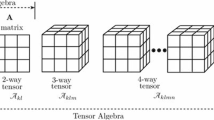Abstract
In the local discriminant embedding (LDE) framework, the neighbor and class of data points were used to construct the graph embedding for classification problems. From a high-dimensional to a low-dimensional subspace, data points of the same class maintain their intrinsic neighbor relations, whereas neighboring data points of different classes no longer stick to one another. However, face images are always affected by variations in illumination conditions and different facial expressions in the real world. So, distant data points are not deemphasized efficiently by LDE and it may degrade the performance of classification. In order to solve above problems, in this paper, we investigate the fuzzy set theory and class mean of LDE, called fuzzy class mean embedding (FCME), using the fuzzy k-nearest neighbor (FKNN) and the class sample average to enhance its discriminant power in their mapping into a low dimensional space. In the proposed method, a membership degree matrix is firstly calculated using FKNN, then the membership degree and class mean are incorporated into the definition of the Laplacian scatter matrix. The optimal projections of FCME can be obtained by solving a generalized eigenfunction. Experimental results on the Wine dataset, ORL, Yale, AR, FERET face database and PolyU palmprint database show the effectiveness of the proposed method.
Similar content being viewed by others
Abbreviations
- c :
-
The number of classes
- \({x_i^j }\) :
-
The jth training sample in class i
- \({y_i^j }\) :
-
The feature matrix of image matrix \({x_i^j }\)
- \({l_i^j }\) :
-
The \({x_i^j }\) is labeled by some class label \({l_i^j }\)
- X :
-
The set of the training samples
- m :
-
The total number of training samples
- m i :
-
The total number of training samples in class i
- \({\bar{{m}}_i }\) :
-
The class mean vector of training samples in class i
- G fuzzy :
-
The fuzzy intraclass neighborhood graphs
- \({{G}^{\prime}_{\rm fuzzy}}\) :
-
The fuzzy interclass neighborhood graphs
- \({W_{\rm fuzzy}^G }\) :
-
The fuzzy intraclass weight
- \({W_{\rm fuzzy}^{{G}^{\prime}}}\) :
-
The fuzzy interclass weight
- \({U_{ij}^G }\) :
-
The fuzzy intraclass membership matrix
- \({U_{ij}^{{G}^{\prime}}}\) :
-
The fuzzy interclass membership matrix
- D G :
-
The fuzzy intraclass diagonal matrix
- \({D^{{G}^{\prime}}}\) :
-
The fuzzy interclass diagonal matrix
- l :
-
The number of training samples from each class
- n :
-
Sample dimension
- n ij :
-
The number of the neighbors
- d :
-
The feature matrix dimension
References
Turk, M., Pentland, A.P.: Face recognition using eigenfaces. In: IEEE Conference on Computer Vision and Pattern Recognition, pp. 586–591 (1991)
Belhumeur P.N., Hespanha J.P., Kriengman D.J.: Eigenfaces versus Fisherfaces: recognition using class specific linear projection. IEEE Trans. Pattern Anal. Mach. Intell. 19(7), 711–720 (1997)
Chen L., Liao H., Ko M., Lin J., Yu G.: A new LDA-based face recognition system which can solve the small sample size problem. Pattern Recognit. 33(10), 1713–1726 (2000)
Yu H., Yang J.: A direct LDA algorithm for high-dimensional data-with application to face recognition. Pattern Recognit. 34(11), 2067–2070 (2001)
Yang J., Yang J.-Y.: Why can LDA be performed in PCA transformed space?. Pattern Recognit. 36, 563–566 (2003)
Dai D.Q., Yuen P.C.: Regularized discriminant analysis and its application on face recognition. Pattern Recognit. 36(1), 845–847 (2003)
Bartlett M.S., Movellan J.R., Sejnowski T.J.: Face recognition by independent component analysis. IEEE Trans. Neural Netw. 13(11), 1450–1464 (2002)
Kim K.I., Jung K., Kim H.J.: Face recognition using kernel principal component analysis. IEEE Signal Process. Lett. 9(2), 40–42 (2002)
Zhang Y., Gu X., Liu C.: Face recognition using kernel discriminant analysis. High Technol. Lett. 8(12), 43–46 (2002)
He, X., Niyogi, P.: Locality Preserving Projections. In: Proceedings of the 16th Conference on Neural Information Processing Systems (2003)
Tenenbaum J.B., de Silva V., Langford J.C.: A global geometric framework for nonlinear dimensionality reduction. Science 290, 2319–2323 (2000)
Roweis S.T., Saul L.K.: Nonlinear dimensionality reduction by locally linear embedding. Science 290, 2323–2326 (2000)
Belkin M., Niyogi P.: Laplacian eigenmaps for dimensionality reduction and data representation. Neural Comput. 15(6), 373–1396 (2003)
Chen, H., Chang, H., Liu, T.: Local discriminant embedding and itsvariants. CVPR (2005)
Yan, S., Xu, D., Zhang, B., Zhang, H., Yang, Q., Lin, S.: Graph Embedding and Extensions: A General Framework for Dimensionality Reduction. In: IEEE Transaction on Pattern Analysis and Machine Intelligence (T-PAMI), pp. 40–51 (2007)
Yang W., Wang J., Ren M., Yang J.: Feature extraction based on laplacian bidirectional maximum margin criterion. Pattern Recognit. 42(11), 2327–2334 (2009)
Zadeh L.A.: Fuzzy sets. Inf. Control 8, 338–353 (1965)
Bezdek J.C., Keller J., Krishnapuram R.: Fuzzy Models and Algorithms for Pattern Recognition and Image Processing. Kluwer Academic Publishers, Dordrecht (1999)
Kw K.C., Pedry W.: Face recognition using a fuzzy fisher classifier. Pattern Recognit. 38(10), 1717–1732 (2005)
Keller J.M., Gray M.R., Givern J.A.: A fuzzy k-nearest neighbour algorithm. IEEE Trans. Syst. Man Cybern. 15(4), 580–585 (1985)
Yang W., Wang J., Ren M., Zhang L., Yang J.: Feature extraction using fuzzy inverse FDA. Neurocomputing 72(13–15), 3384–3390 (2009)
Zhang D.: Palmprint Authentication. Kluwer, Dordrecht (2004)
Yang J., Zhang D., Yang J., Niu B.: Globally maximizing, locally minimizing: unsupervised discriminant projection with applications to face and palm biometrics. IEEE Trans. Pattern Anal. Mach. Intell. 29(4), 650–664 (2007)
Wright J., Yang A.Y., Ganesh A., Sastry S.S., Ma Y.: Robust face recognition via sparse representation. IEEE PAMI 31(2), 210–227 (2009)
Yang, M., Zhang, L.: Gabor feature based sparse representation for face recognition with gabor occlusion dictionary. In: ECCV (2010)
Yang, M., Zhang, L., Yang, J., Zhang, D.: Robust sparse coding for face recognition. CVPR (2011)
Author information
Authors and Affiliations
Corresponding author
Rights and permissions
About this article
Cite this article
Wan, M., Li, M., Lai, Z. et al. Feature extraction based on fuzzy class mean embedding (FCME) with its application to face and palm biometrics. Machine Vision and Applications 23, 985–997 (2012). https://doi.org/10.1007/s00138-011-0365-5
Received:
Revised:
Accepted:
Published:
Issue Date:
DOI: https://doi.org/10.1007/s00138-011-0365-5




